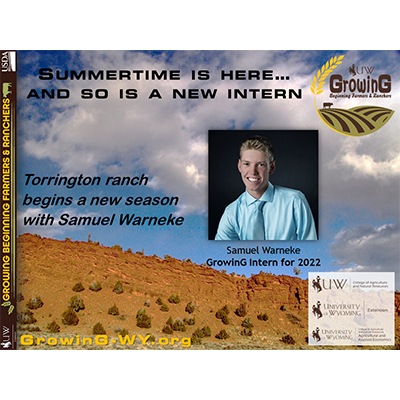Internship Wrap Up at the County Fair
#bfrdpwy #aginternship #RightRisk

Moving cattle.
Wow, what a summer! It’s hard to believe this was week 12 of my GrowinG Internship. During my first couple weeks out here I had some doubts and second thoughts about what I’d gotten myself into. This was not an easy summer internship. These twelve weeks have “toughened me up” and taught me more than I could have imagined. One big thing I learned this summer was how tough ranching is. Elden told me that you must love what you do to wake up every day and ranch. I think that can go with any job, why go work at a job you don’t love your entire life? This past week I was surrounded by the show cattle industry at the Goshen County Fair, where each of Jason Baldwin’s kids showed a heifer and a feeder steer. At the fair I was able to gain knowledge about genetics, breeds of cattle and the standard qualities of body size, along with muscle mass and the frame of which the cattle were judged on. There are three breeds my host ranch raises: Herefords, Black Angus, and Black Baldies. Black Baldies are a cross between a Hereford bull and a Black Angus heifer/cow. For ranchers and feedlots, the traits that are most appealing for Herefords are a long frame and heavy size; for Black Angus, it’s fast growth and quick to finish.

A list of the residents of Prairie Center and directions.
One thing I didn’t understand, but finally grew to appreciate, was re-purposing and reusing old parts, equipment, metal, and even baling wire. My initial thought was it would be a hassle to go looking around for used parts that were kept, trying to find exactly what you needed. To me, it was a waste of space keeping all those old parts. Then I began to understand the cost effectiveness of reusing and repurposing those parts. Not only could you save money, but it is also more environmentally friendly.
An idea I would challenge is the increased confusion that revolves around ranching. Misinformation on the ranching industry and animal welfare flood the news sources. Beyond television or newspapers, social media exploits the misconceptions people have about these areas, causing more harm than good. While working on the ranch I’ve seen first-hand just how important the treatment of cattle is to the ranchers. Their livelihood depends on healthy calves, cows, and bulls. This is a way of life and, for some, a job that depends on welfare and caring for the animals and land that rely on one another for profit.

Sunrise over the center pivot.
One thing I had the chance to do this summer was move a herd by myself, two pastures over. My overall confidence and knowledge has grown so much through my GrowinG Internship this summer. I plan to continue building upon that new mentality of growth and experiences as I move off the ranch. I hope to further my understanding in the following areas: the process of ranching, ecology, farming, and water scarcity. In order to do so, I will continue to ask questions about old practices versus new, and ways of land management, as well as participate more in discussions about sustainability, conservation, and preservation. Who knows, maybe with what I have learned in the past week, I’ll get more involved with the county fairs or look into jobs with market and show cattle.

Up on the windmill.
Questions I ended my internship with are: what is the calving and branding process like, how do sellers load and haul off the steers and heifers, how do ranchers break even at the end of the year, and what government programs are there for ranchers to get involved with.
Submitted by: Samuel Warneke
Edited by: GrowinG Internship Team

